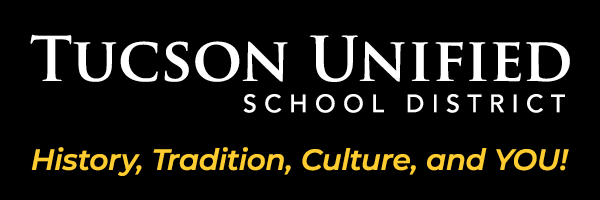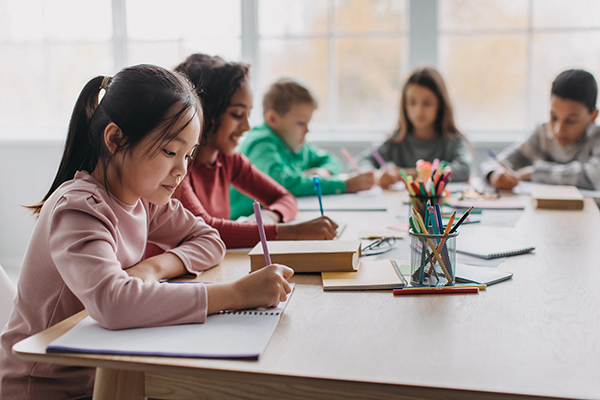Kindergarten ELA Course
Question 1: How can I use language to learn about the world?
Question 2: What can I learn from speaking and listening to others?
Starting our school journey together, we are learning about our classroom and its routines. We play with language and listen for the sounds that make up spoken words. We are practicing routines to learn about letters and words. Through songs, rhymes and stories we are hearing the smallest sounds of English.
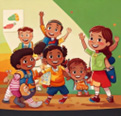
Living things are all around us and we learn about what they need to grow – food, water, and a suitable place to live. We also learn about print, connecting speech sounds to letters in the alphabet. We are learning how to have conversations with classmates, and working together to practice new skills like sorting, cutting and folding.
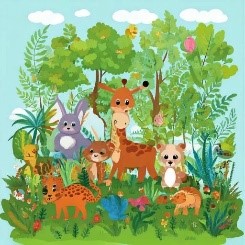
The elements of stories can help us think about the world. We are learning about characters, setting (place) and the major events that take place in different stories. We are learning the parts of a complete sentence - writing about “who” and “what” they are doing by talking about nouns and verbs.
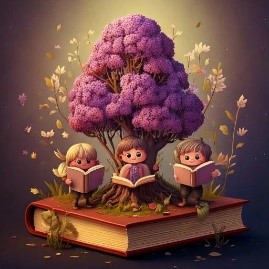
In this unit, we practice asking questions and looking for answers in text that we read as a class. Learning the difference between questions and statements allows us to have richer conversations. Speaking in complete sentences helps us learn to write complete sentences that make sense and share our thinking.
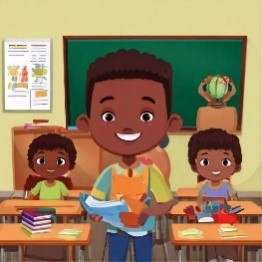
Speaking and listening to different stories helps us learn about the world and each other. We can write simple sentences that make sense and include a noun (who?) and a verb (what doing?). Capital letters are used at the beginning of sentences and for special words. Punctuation marks are needed at the end of sentences.
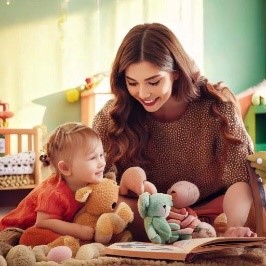
We are learning how to blend sounds into words. Simple, decodable books allow us to practice reading using sound-letter connections. Rereading to gain fluency helps us build our confidence as readers. We practice using our sound-spelling to write words that match our drawings. We can use our capital and lowercase letters correctly to write.
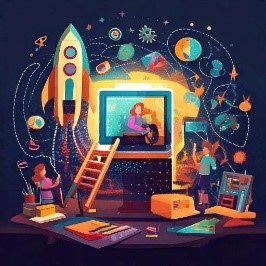
Books can be fun! Books can teach us new information and provide us an opportunity to “visit” places far away! We learn how authors use pictures to provide additional support for comprehension and engagement with text. We begin learning how to use combinations of letters (like “ch”) to read and write even more words as our eyes move left to right, reading in simple text.

We use our growing skills to listen to and tell stories, talking about characters and lessons learned from text. This unit also helps us connect celebrations around the world to those we enjoy with our own families. Using our letter-sound connections, we respond to texts in our own writing, sharing opinions and ideas. We start to learn about the other sounds of each vowel to read and spell new words.
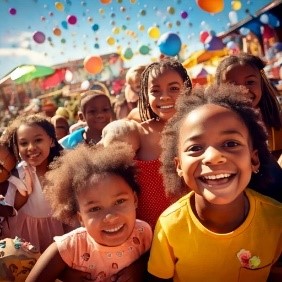
We learn about cause and effect as we explore what we wear and do in different types of weather. As we read nonfiction, we are learning how to recognize important details and make connections to our lives. We continue to practice using letter-sound combinations to read and to write more complex sentences including descriptions of where, when or why.
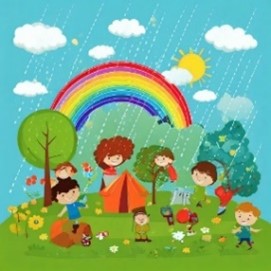
We practice listening to and retelling stories, identifying the problem and solution. We read easy books to practice reading high frequency words and to sound out other words. We want our reading to sound like talking! Talking about our ideas and rehearsing our sentences before writing allows us to write our thoughts more quickly and efficiently.
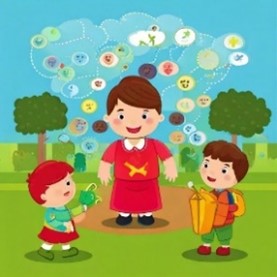
Books have lots of information in pictures, maps and graphics. We are learning how to use those supports to better understand nonfiction. Learning about science and the world is helping us grow our vocabulary and make connections between topics. We can expand our writing using question words such as when, where, why and how.
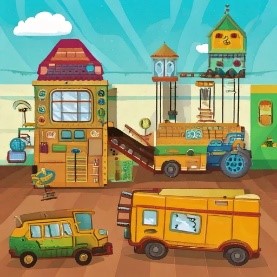
We are here to equip, inspire and enrich the strengths of all learners with relevant educational experiences for lifelong learning.
Every day we strive to provide a world-class education that is equitable, empowering and inspiring for all.
Learn more about our programs & resources.
C&I Department
520-225-6282
1010 E. Tenth St., Tucson, AZ 85719 Map (google.com)
